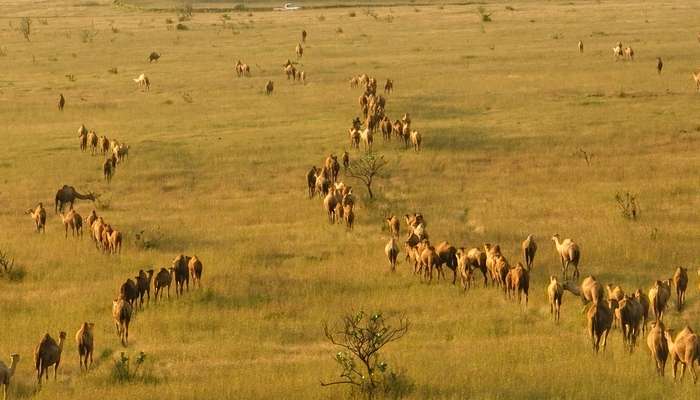After the conclusion of the Khareef Dhofar season, camel herders in Salalah take their livestock for grazing in the wadis that were closed during the monsoon. This journey marks the beginning of the Sarb (Spring Season) and is known as Camel Khatlah, a beloved tradition among camel owners and herders in the region. The sight of camels traversing the hills while old and young men chant folk songs is a cultural heritage that is deeply valued by the community.
During the Camel Khatlah, camels are transferred from the plains to the grazing areas around the mountains as the season changes. Local men and elders convene to determine the date for the event, which serves as a gathering for camel owners and guests from various areas within and outside of Dhofar Governorate. This annual tradition not only provides a practical purpose for maintaining the balance of grazing areas but also showcases the strong social bonds within the community.
As the Sarb Season progresses, camel owners work to ensure that the mountainous grazing lands are dry in preparation for Camel Khatlah. This strategic planning allows for the successful execution of the festival, as camel breeders follow traditional customs and norms to uphold the integrity of the event. By carefully preserving plantations and coordinating the timing of the event, the camel herders honor the legacy of their ancestors and the deep connection between man and land in this region of Oman.
The Camel Khatlah tradition paints a vivid picture of the rich heritage and experiences of the local population, offering insights into the relationship between man and nature throughout the changing seasons. Through the chanting of folk songs and the movement of camels across the landscape, the cultural significance of this annual event is fully realized. The deep-rooted customs and practices observed during the Camel Khatlah underscore the importance of preserving Oman’s traditional way of life and paying homage to the legacy of past generations.
Overall, the Camel Khatlah in Salalah serves as a poignant reminder of the enduring traditions and customs that have shaped the local community for generations. By coming together to celebrate the changing seasons and the connection between man and beast, camel herders honor their heritage and continue to pass down their unique way of life to future generations. The cultural richness and social cohesion exhibited during the Camel Khatlah highlight the importance of preserving these traditions and ensuring that they remain an integral part of the fabric of Omani society.











